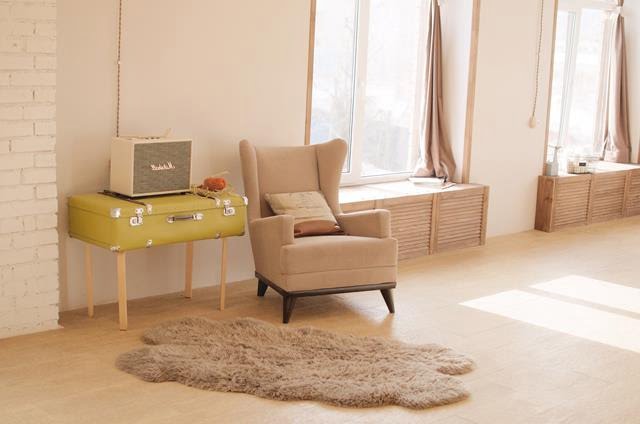When it comes to home improvement projects, finding the necessary funds can sometimes be a challenge. This is where home improvement loans come in. These loans provide homeowners with the financial support they need to renovate, remodel, or repair their homes. But before embarking on this journey, it is crucial to understand the basics of home improvement loans, including how long they typically last.
A home improvement loan is a type of loan specifically designed to fund renovations, repairs, and upgrades to a residential property. It allows homeowners to borrow money that can be used towards improving their living spaces. However, one important aspect that borrowers should carefully consider before taking out a loan is the duration of the repayment term.
Planning loan duration is vital as it determines how long borrowers will have to make regular payments until their loan is fully paid off. The length of most home improvement loans can vary depending on several factors, including the borrower’s financial situation, the amount borrowed, and the policies set by lenders.
In this article, we will explore these factors in detail and delve into the average loan terms for home improvement projects. Additionally, we will discuss different options available for short-term and long-term loans and share useful tips for finding the right loan term tailored to individual needs.
By understanding the basics of home improvement loans and carefully planning loan duration, homeowners can embark on their renovation projects with confidence. Join us as we dive into this topic and explore various aspects related to choosing the right loan term for your specific needs and goals. Whether you are considering a short-term or long-term solution, this comprehensive guide will equip you with valuable insights to make informed decisions throughout your home improvement journey.
Loan Duration Factors
When it comes to home improvement loans, the duration of the loan plays a crucial role in determining the overall cost and feasibility of the project. Several factors influence the length of home improvement loans, and understanding these factors is essential for borrowers looking to make informed decisions. In this section, we will discuss some key factors that can impact loan duration and help borrowers better understand their options.
One of the primary factors that influence the length of a home improvement loan is the borrower’s financial situation. Lenders often consider factors such as credit score, income stability, and debt-to-income ratio when determining loan terms. Borrowers with higher credit scores and stable financial backgrounds may have access to longer loan durations with more flexible repayment options.
Another factor that can influence the length of a home improvement loan is the loan amount itself. Larger projects that require significant funding may necessitate longer repayment periods to make monthly payments more manageable for borrowers. Conversely, smaller projects may have shorter loan durations since they typically require less financing.
Lender policies also play a crucial role in determining loan duration. Different lenders may have varying guidelines regarding loan terms, interest rates, and repayment schedules. It is essential for borrowers to shop around and compare offerings from different lenders before making a decision. Taking the time to research lenders and understanding their policies can help borrowers secure favorable conditions for their home improvement loans.
| Factors | Description |
|---|---|
| Borrower’s financial situation | Credit score, income stability, and debt-to-income ratio |
| Loan amount | The size of the project requiring funding |
| Lender policies | Different guidelines regarding loan terms, interest rates, and repayment schedules |
Average Loan Terms
The duration of a home improvement loan is an important factor to consider when financing your renovation project. Understanding the average loan terms can help you make an informed decision about how long you should borrow funds for. In this section, we will explore statistics and trends regarding the standard duration for home improvement loans, as well as provide insights into popular loan terms in the industry.
When it comes to home improvement loans, there is no one-size-fits-all answer for how long these loans typically last. The duration of a home improvement loan can vary depending on several factors such as the borrower’s financial situation, the amount of the loan, and the policies of the lender. However, data suggests that the most common loan term for home improvement projects falls between 1 to 5 years.
According to a report by LendingTree, around 55% of borrowers opt for loan terms ranging from 1 to 5 years for their home improvement projects. This indicates that many homeowners choose shorter-term loans to finance their renovations.
Shorter repayment periods can be advantageous as they allow borrowers to pay off their debt more quickly and potentially save on interest costs. On the other hand, longer-term loans may be more suitable for larger projects that require a higher amount of funding.
| Loan Term | Percentage of Borrowers |
|---|---|
| 1-3 years | 30% |
| 4-6 years | 25% |
| 7-10 years | 31% |
| 10+ years | 14% |
Keep in mind that these statistics are not definitive and may vary depending on individual circumstances. It is essential to carefully consider your own financial situation, project needs, and repayment capabilities when determining the appropriate loan duration for your home improvement journey.
Short-Term Loans
Short-term loans can be an attractive option for homeowners who are looking to complete smaller home improvement projects quickly. However, it is important to weigh the pros and cons before deciding if this type of loan is right for you.
Pros
- Quick access to funds: One of the main benefits of short-term loans is that they provide fast access to the necessary funds. This can be particularly advantageous for urgent projects or unexpected repairs.
- Lower overall interest costs: Since short-term loans typically have a shorter repayment period, borrowers may end up paying less in interest over the life of the loan compared to longer-term options.
- Easier qualification: Short-term loans often have fewer requirements and qualifications than their long-term counterparts. This can make it easier for homeowners with less-than-perfect credit scores or lower incomes to secure financing.
Cons
- Higher monthly payments: While short-term loans may save you money in interest costs, they typically come with higher monthly payments due to the shorter repayment period. This can put a strain on your budget if you’re not prepared.
- Limited borrowing capacity: Short-term loans typically have lower borrowing limits compared to long-term loans. If your project requires a significant amount of financing, a short-term loan may not provide enough funds.
- Limited project scope: Since short-term loans generally come with smaller borrowing amounts and repayment periods, they are better suited for minor renovations or repairs rather than large-scale home improvement projects.
It’s essential to carefully consider your specific financial situation and project needs before deciding on a short-term loan. While this option may be suitable for small, urgent projects, it may not be the best choice for larger renovations or improvements that require more time and money.
Long-Term Loans
When it comes to home improvement loans, opting for a long-term loan can have its advantages and considerations. Before committing to an extended repayment plan, it is essential to understand the benefits and challenges involved. Here, we explore the advantages of choosing a long-term loan and discuss some important considerations.
Advantages of Long-Term Loans
- Lower monthly payments: One significant advantage of long-term loans is that they often come with lower monthly payments compared to short-term loans. This can provide homeowners with more financial flexibility and make it easier to manage their budget while undertaking their home improvement projects.
- Opportunity for larger projects: Longer loan terms can make larger home improvement projects more feasible by spreading out the cost over an extended period. Whether you’re planning a major renovation or adding an addition to your home, a long-term loan can give you the funds needed without straining your finances all at once.
- Potential for better interest rates: In some cases, lenders may offer more favorable interest rates on long-term loans compared to shorter terms. This could result in significant savings over time, making it a cost-effective choice in the long run.
Considerations for Long-Term Loans
- Total cost over time: While lower monthly payments are appealing, it’s crucial to consider the total cost of borrowing over the extended term. Although interest rates may be lower, paying back the loan over a longer duration means paying more interest overall.
- Impact on equity:The length of your loan term can affect the amount of equity you have in your home. If you plan on selling your property in the near future, a long-term loan may reduce your equity and potentially impact your ability to sell at a profit.
- Loan commitment: Committing to a long-term loan means having an ongoing financial obligation for an extended period. Before opting for this type of loan, it’s important to ensure that you have stable employment and income to meet monthly payments consistently.
Opting for a long-term loan can provide homeowners with greater flexibility and affordability when it comes to their home improvement projects. However, it is vital to carefully consider the potential challenges and implications of an extended repayment plan. By weighing the advantages and considerations, you can make an informed decision that aligns with your financial goals and project needs.
Finding the Right Loan Term
When it comes to home improvement loans, finding the right loan term is crucial in ensuring that the repayment plan aligns with your individual needs. By carefully considering factors such as budget, projected return on investment, and personal financial goals, you can determine the appropriate loan duration for your specific project.
One important factor to consider when choosing a loan term is your budget. Evaluate how much you can afford to pay back each month without straining your finances.
A shorter loan term may require higher monthly payments, but it allows you to pay off the loan faster and potentially save on interest costs in the long run. Conversely, opting for a longer loan term may result in lower monthly payments but could mean paying more overall due to accruing interest over an extended period.
Additionally, consider the projected return on investment (ROI) for your home improvement project. Some projects have a higher potential ROI than others.
For example, if you plan on making renovations that will increase the value of your home significantly, such as adding another bedroom or upgrading the kitchen, you might be more inclined to select a longer loan term since you anticipate recouping some of the expenses when selling your property.
However, for projects with a lower ROI or those that aim to improve your quality of life rather than add value to your home directly, a shorter loan term might be more suitable.
Another important consideration is your personal financial goals. Are you looking to become debt-free quickly? Or are you comfortable taking on long-term debt for larger projects?
Assess whether paying off your home improvement loan quickly aligns with other financial objectives you might have, such as saving for retirement or education expenses. Alternatively, if you have other debts with higher interest rates than what’s offered by home improvement loans, it might make more sense to focus on those debts first and opt for a longer loan term.
By evaluating these factors and conducting thorough research, you can tailor the loan duration to your individual needs. Remember that while shorter terms may save you money on interest, they might require higher monthly payments.
Longer loan terms offer greater flexibility with lower monthly payments, but they ultimately result in paying more overall. It’s vital to carefully weigh these factors against one another to find the right loan term that maximizes your financial stability and aligns with your home improvement goals.
Negotiating Loan Terms
Developing a Strategy for Negotiating
When it comes to securing favorable loan terms for a home improvement project, having a well-thought-out strategy is essential. Before approaching potential lenders, take some time to evaluate your financial situation and determine your needs and priorities. Consider factors such as the amount of money you need to borrow, your credit score, and your ability to make monthly payments. By understanding your own position and being prepared with this information, you can enter negotiations with confidence.
Researching and Comparing Lenders
One of the keys to securing favorable loan terms is conducting thorough research on different lenders. Start by gathering information from various sources such as online reviews, recommendations from friends or family members, and professional organizations in the home improvement industry. Look for lenders that specialize in home improvement loans or have experience working with borrowers in similar financial situations.
Once you have compiled a list of potential lenders, compare their terms and conditions. Consider factors such as interest rates, repayment options, fees, and customer service reputation. This will allow you to make an informed decision about which lender is the best fit for your needs.
Negotiating Key Terms
Once you have identified a potential lender that aligns with your needs and preferences, it’s time to start negotiating specific loan terms. Keep in mind that everything is negotiable during this process, from the interest rate to the repayment schedule. Start by making sure you understand all the details of the proposed loan offer before attempting to negotiate any changes.
Then, consider what aspects are most important to you and focus on those during negotiations. For example, if getting a lower interest rate is a priority for you, be prepared to present reasons why you believe you deserve a better rate or provide evidence of competing offers from other lenders. Remember that negotiating is a two-way street; be willing to compromise on certain aspects in order to achieve more favorable conditions overall.
By following these strategies and taking the time to negotiate effectively, homeowners can secure more favorable loan terms for their home improvement projects. Remember to have a clear strategy, thoroughly research potential lenders, and be prepared to negotiate key terms. The effort put into negotiating can result in significant savings and a better overall borrowing experience.
Case Studies
Case Study 1: Sarah’s Quick Kitchen Renovation
Sarah, a homeowner in her late twenties, recently purchased a fixer-upper and decided to renovate the kitchen. She wanted to complete the project as quickly as possible since she planned to move into the house soon. Sarah opted for a short-term home improvement loan with a duration of one year.
This allowed her to receive the necessary funds promptly and complete the project on time. The short-term loan gave her peace of mind knowing that she could pay it off quickly without accruing excessive interest. Sarah successfully renovated her kitchen within the desired timeframe and was able to sell her old property at a higher price due to the updated kitchen, ultimately recouping her investment.
Case Study 2: Mark’s Extensive Home Expansion
Mark had been living in his family home for years but felt it was time for an extensive expansion to accommodate his growing family. He wanted to add multiple rooms and increase overall square footage. Given the scale of his project, Mark realized that he needed a long-term home improvement loan with a duration of ten years.
This allowed him to borrow a larger sum of money while distributing repayment over a longer period, making monthly payments more manageable for him. Mark successfully completed his home expansion within budget and took advantage of increased property value down the line.
Case Study 3: Lisa’s Eco-Friendly Upgrades
Lisa was passionate about incorporating eco-friendly upgrades into her home but knew these renovations could be quite costly upfront. To make these changes while staying within her financial means, Lisa opted for a mid-term home improvement loan with a duration of five years.
This gave her enough time to gradually implement solar panels, energy-efficient appliances, and insulation improvements over time while spreading out the expenses over several years. Lisa’s approach allowed her to achieve sustainable upgrades without adversely impacting her budget, resulting in reduced energy costs and a more environmentally friendly home.
These case studies highlight how homeowners can choose loan durations that align with their specific project requirements and financial situations. It is essential to consider the scope of the renovation, available funds, and personal goals before selecting the loan term. By taking inspiration from these real-life examples, individuals can make informed decisions when it comes to their own home improvement journeys.
Conclusion
In conclusion, when it comes to selecting the right loan duration for your home improvement journey, taking the time to carefully consider your options is crucial. As discussed in this article, there are various factors that can influence the length of a home improvement loan, including your financial situation, loan amount, and lender policies. It’s important to weigh the pros and cons of both short-term and long-term loans before making a decision.
Short-term loans offer the advantage of quick repayment and potentially lower interest rates. They are suitable for smaller projects or those with a fast turnaround time. However, it’s essential to ensure that you have the means to comfortably repay the loan within a shorter timeframe.
On the other hand, long-term loans provide extended repayment plans that may be more feasible for larger projects. They allow you to spread out your payments over an extended period, resulting in smaller monthly installments. However, it’s important to consider the potential drawbacks of longer loan terms, such as higher overall interest costs and a prolonged commitment.
Ultimately, finding the right loan term requires careful consideration of factors such as your budget, projected return on investment, and personal financial goals. Consulting with professionals such as lenders or financial advisors can also provide valuable insights and guidance tailored to your specific situation.
Frequently Asked Questions
What is the longest term for a home improvement loan?
The longest term for a home improvement loan can vary depending on the lender and the specific loan program. However, it is not uncommon to find loan terms that go up to 20 or even 30 years for large-scale home improvement projects.
These longer terms can be beneficial for borrowers as they offer more flexibility in terms of repayment options and lower monthly payments. However, it is important for borrowers to consider the overall cost of borrowing over a longer term and ensure that they will be able to comfortably manage the repayments over the extended period.
Are renovation loans a good idea?
Renovation loans can be a good idea for many homeowners, especially those who have limited savings or need financing to fund significant home improvement projects. These loans often provide a convenient way to finance renovations without having to tap into personal savings or credit cards with high-interest rates.
Additionally, renovation loans may also offer competitive interest rates and flexible repayment terms that suit individual needs. However, it is crucial for homeowners to carefully assess their financial situation before taking on debt and ensure that they will be able to meet the monthly payment obligations of the loan.
How long are home equity loan terms?
Home equity loan terms typically range from anywhere between five to thirty years. The length of the term depends on various factors such as the lender, loan amount, borrower’s creditworthiness, and equity in the property being used as collateral. Shorter-term home equity loans may be attractive to borrowers who wish to pay off their debt quicker and minimize interest costs.
On the other hand, longer-term home equity loans could be more suitable for individuals who prefer smaller monthly payments but are willing to pay more interest over time. Ultimately, homeowners should consider their financial goals and budget constraints when selecting a home equity loan term that aligns with their needs.

I’m thrilled to have you here as a part of the Remodeling Top community. This is where my journey as an architect and remodeling enthusiast intersects with your passion for transforming houses into dream homes.





